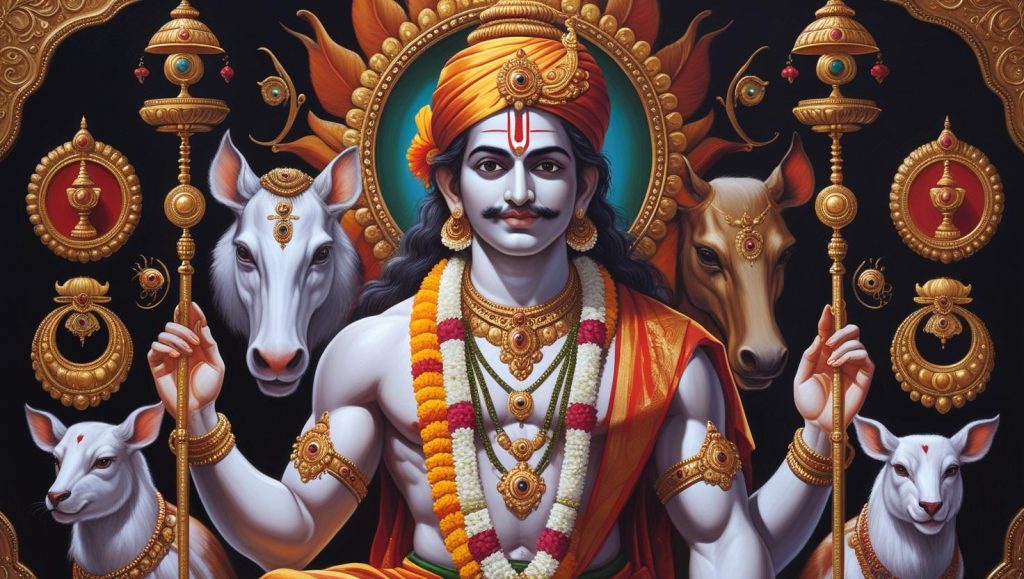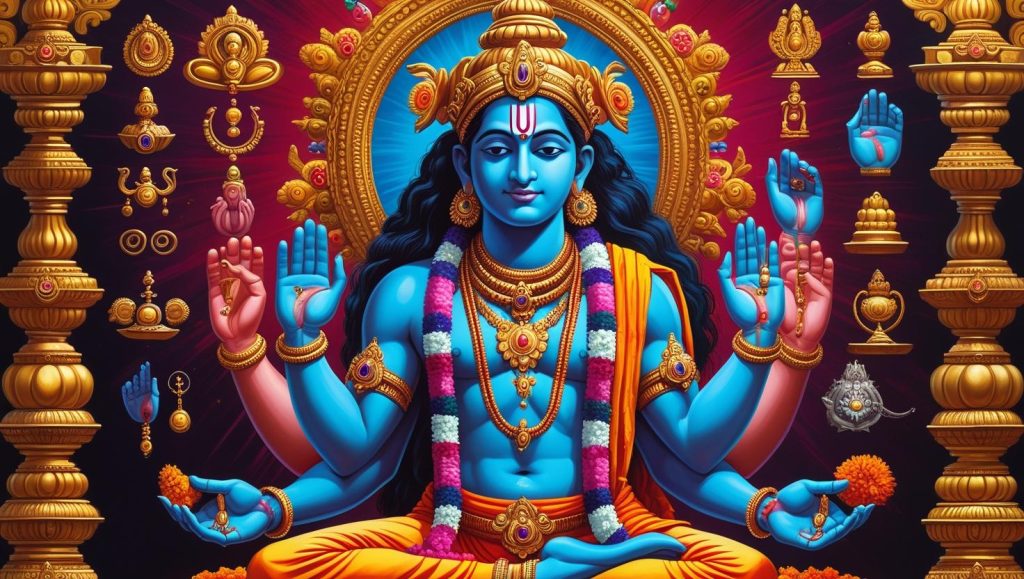1.The Calm and Serene Face
The gentle expression of Rishabhdev’s face represents inner tranquility and the victory over passions such as anger, greed, pride, and deceit. His meditative smile inspires devotees to cultivate peace within themselves, even amid life’s challenges.

2. The Standing or Seated Posture
Rishabhdev is often depicted in Kayotsarga (standing meditation) or Padmasana (lotus posture).
- Kayotsarga symbolizes complete detachment from the body and worldly desires.
- Padmasana represents deep meditation and stability of mind.
3. The Bull Symbol (Lanchhan)
Every Jain Tirthankar has a unique emblem called a Lanchhan. For Rishabhdev, it is the bull, signifying strength, patience, and steadfastness. It also reflects his life before renunciation, when he was a king known for his courage and wisdom.
4. Absence of Ornaments
Unlike deities in other traditions, Tirthankars are depicted without ornaments, symbolizing renunciation and simplicity. This reminds devotees that spiritual wealth surpasses material possessions.
5. The Halo (Prabhamandal)
A radiant halo often surrounds his head, symbolizing divine enlightenment and the infinite spiritual aura that comes from self-realization.

6. The Lotus Pedestal
The lotus on which Rishabhdev’s idol rests signifies purity of the soul, which remains untouched by worldly impurities, just as a lotus blooms beautifully above muddy waters.
7. The Unblinking Eyes
The still, unblinking eyes of the idol remind devotees of focused meditation and the unwavering gaze of a soul fixed on liberation.
8. Simplicity in Attire
Rishabhdev is depicted in Digambara form (without clothing), symbolizing absolute detachment and freedom from all bonds—physical, material, or emotional.
Conclusion
The idol of Rishabhdev is not merely an object of worship; it’s a spiritual guide in stone. Every element—be it the bull emblem, the serene expression, or the meditative posture—teaches us the essence of Ahimsa (non-violence), detachment, and inner awakening. By contemplating these symbols, devotees can find inspiration to walk the path of truth, self-discipline, and liberation.

